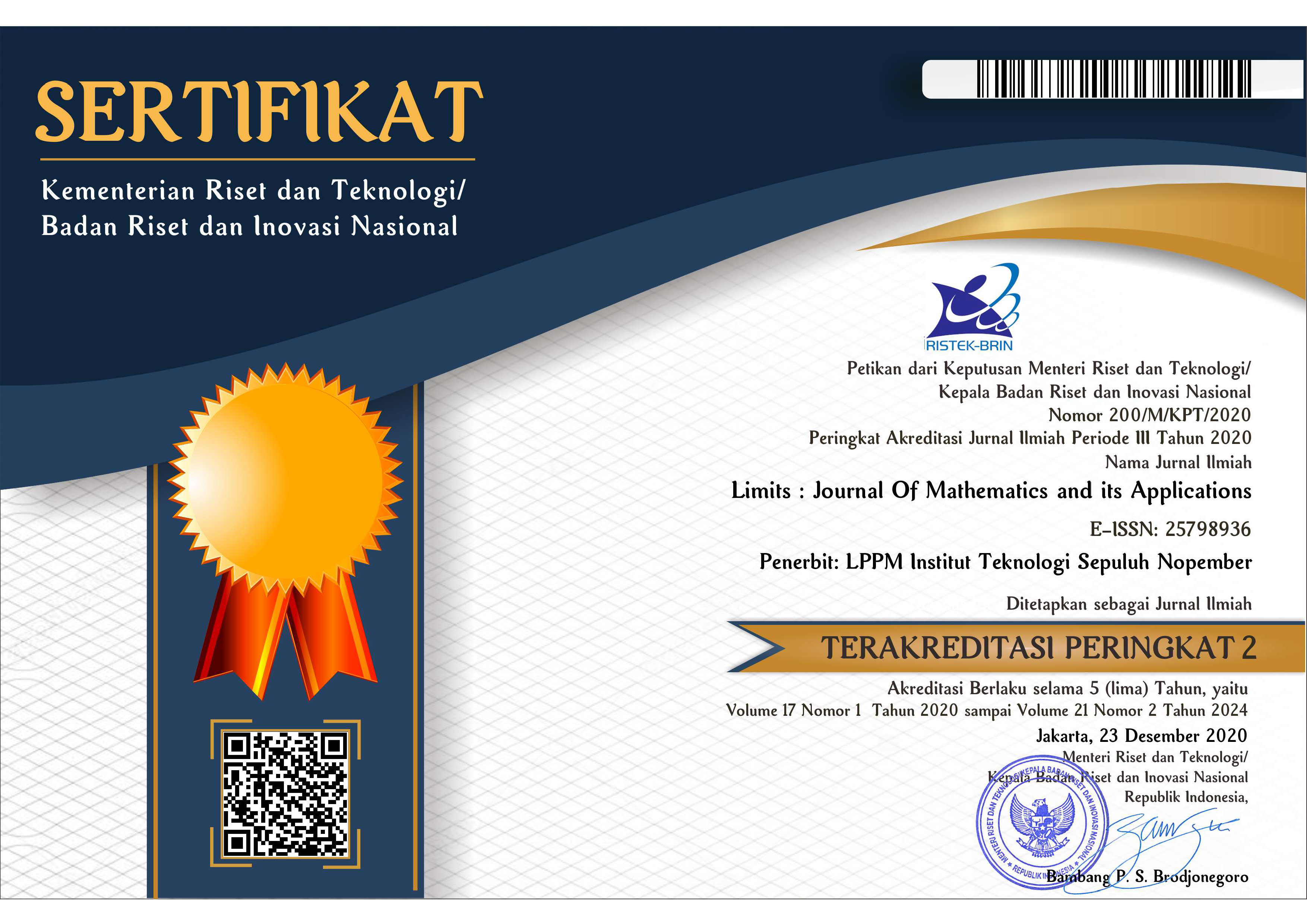Pengaruh Inflasi terhadap Strategi Optimal Investasi dan Konsumsi dengan Model Stokastik
Abstract
The aim of this study is to investigate an optimal investment-consumption strategy under inflation rate with interest rate is described by Cox-Ingersol-Ross (CIR) model and volatility of the stock price is defined by Heston’s volatility model. A dynamic programming principle is used to obtain a Hamilton Jacobi Bellman (HJB) equation for the value function and choose a power utility function as utility function. The explicit solution of optimal investment and consumption are acquired with using separate variable and approach variable technique. The parameter’s values are approached by Euler-Maruyama method and Ordinary Least Square (OLS) method. Assumed that the portfolio of the investor contains a risk-free asset and a risk asset. Monthly historical data of TLK stock is used as risk asset and monthly historical data of BI 7-Day (Reverse) Repo Rate (BI7DRR) is used as risk-free asset, we obtain that the proportion of investment in stock is directly proportional to return of stock and the inflation rate does not have an impact on proportion investment in the stock. Meanwhile the optimal consumption of wealth is directly proportional to investor’s wealth and inversely proportional with inflation rate, which is the investor should consume less money of his wealth when the inflation rate increases.
Keywords
Full Text:
PDFReferences
R. C. Merton, “Life Portfolio Selection under Uncertainty: the continuous-time case,” Review of Economics and Statictics, vol. 51, no. 3, pp. 247-257, 1969.
R. C. Merton, “Optimum Consumption and Portfolio Rules in a Continuous-Time Model,” Journal of Economic Theory, vol. 3, pp. 373-413, 1971.
H. Chang dan X.M. Rong, “An Investment and Consumption Problem with CIR Interest Rate and Stochastic Volatility,” Abstract and Applied Analysis, vol. 2013, pp. 1-12, 2013, doi: 10.1155/2013/219397.
G. Orlando, R. M. Mininni, and M. Bufalo, “Forecasting Interest Rates Through Vasicek and CIR Models: A Partitioning Approach,” Journal of Forecasting, vol. 39, no. 4, pp. 569-579, 2019.
D. Lamberton and G. Terenzi, “Variational Formulation of American Option Prices in the Heston Models,” SIAM J. Financial Math, vol. 10, no. 1, pp. 261-308, 2019.
H. Wu, “Optimal Investment-Consumption Strategy under Inflation in A Markovian Regime-Switching Market,” Discrete Dynamics in Nature and Society, vol. 2016, no. 1, pp. 1-17, 2016, doi: 10.1155/2016/9606497.
Suseno dan S. Astiyah, Inflasi. Jakarta: Pusat Pendidikan dan Studi Kebanksentralan Bank Indonesia, 2009.
Y. Y. Chou, N.W. Han, and M. W. Hung, “Optimal Portfolio-Consumption Choice under Stochastic Inflation with Nominal and Indexed Bonds,” Applied Stochastic Models in Business and Industry, vol. 27, no. 6, pp. 691-706, 2011.
A. Mamun and N. Visaltanachoti, “Inflation Expectation and Asset Allocation in the Presence of an Indexed Bond,” SSRN Electronic Journal, 2006, doi: 10.2139/ssrn.907147.
X. Zhang and X. Zheng, “Optimal Investment-Reinsurance Policy with Stochastic Interest and Inflation Rates,” Mathematical Problems in Engineering, vol. 2019, pp. 1-14, 2019, doi: 10.1155/2019/5176172
DOI: http://dx.doi.org/10.12962%2Flimits.v19i1.9987
Refbacks
- There are currently no refbacks.
Jumlah Kunjungan:

Limits: Journal Mathematics and its Aplications by Pusat Publikasi Ilmiah LPPM Institut Teknologi Sepuluh Nopember is licensed under a Creative Commons Attribution-ShareAlike 4.0 International License.
Based on a work at https://iptek.its.ac.id/index.php/limits.






